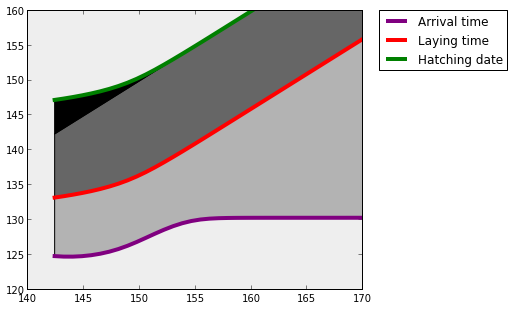This example has bitrotted – see the Bokeh slider instead.
My partner Nadiah has developed an eco-evolutionary model describing the response of a migratory bird’s arrival time and prelaying period to climate change. The Octave code is here: https://github.com/nadiahpk/phenology-two-trait-migratory-bird.
The final plots look like this:

A natural question is: how does the shape of the arrival time change as the main model parameter is varied? A nice way to visualise this is using ipywidgets and nbviewer. Here is an ipython notebook with a slider for the main model parameter:
Getting this to work was surprisingly straightforward. In short:
Make a notebook using ipython. I used oct2py to call the Octave code from Python.
Install nbviewer on a publicly accessible host.
Run nbviewer like so:
cd $HOME/nbviewer # this is the nbviewer repository from github python -m nbviewer --debug --no-cache --localfiles=$HOME/phenology-two-trait-migratory-birdThis runs the server on port 5000. You could run it in a screen or tmux session, or use supervisord or angel to keep the process alive.
Point nginx to the nbviewer proces:
# /etc/nginx/sites-available/amazonaws.com server { listen 80; server_name ec2-xyz.amazonaws.com; access_log /var/log/nginx/amazonaws.com.access.log; location / { proxy_pass http://127.0.0.1:5000; # Reverse proxy to nbviewer } }The notebook doesn’t appear on nbviewer’s front page, so just naviate to a URL of the form
http://your.host.example.com/localfiles/foo.ipynb
to see the notebook foo.ipynb.